“Corruption existed at the time of [the Shah’s] government. At that time, the system was naturally corrupt and it used to nurture corruption. One would have to search hard to find a morally healthy person in those days. Today, this is not the case. Of course, corruption — bad forms of it — exist, but it is a case-by-case basis ... not systematic. Nonetheless, it should be dealt with.”
Supreme Leader Ayatollah Ali Khamenei, June 7, 2017
It has been almost two and a half years since the Leader of the Islamic Republic announced with confidence that there was no systematic corruption in Iran. Since that day, however, news and allegations of endemic corruption have only intensified — including a recent row between the Iranian president and the spokesman for the judiciary.
On Sunday, November 10, President Hassan Rouhani and the spokesman for the judiciary threatened to disclose corruption scandals about one another involving “billions of dollars.”
Rouhani delivered his accusations during a public speech in the city of Yazd, lashing out against the judiciary: “Now that you are pursuing cases of corruption involving millions and billions of tomans, also explain to the people the cases of corruption involving billions of dollars” — a reference to the case of Babak Zanjani, who was tasked with selling Iran’s oil while the country was under previous international sanctions over its nuclear program. “After a number of years they issued a death sentence for the case of the individual who stole US$2.8 billion from the treasury, but it’s not clear where this money went and who else had a role in this case,” Rouhani said. Zanjani has refused to disclose the whereabouts of the money, likely fearing that he will be executed as soon as he does.
In his speech, Rouhani said despite the fact that Zanjani had been jailed and sentenced to death, “it is not yet clear to us where the money is, who the people responsible for it are and why those who played a part in this are not explaining it to the people.”
Rouhani went further, accusing not only the judiciary but also some state institutions of illegal financial dealings. He said some institutions had acquired $964 million without having to account for it, and said at the same time that other institutions are in debt to the amount of $700 million. “Taking a few people to court over corruption will not fool the people, and they must know about the fate of the large sums of money that have been taken from the treasury,” he said.
President Rouhani went on to cite six specific figures: $2.7 billion, $2 billion, $700 million, $18 billion, $7.3 billion and $12 billion. But, except for the $2.7 billion that relates to the case of Babak Zanjani, he did not provide any further specifics and only made implicit accusations against certain individuals and institutions.
Unsurprisingly, Rouhani’s statement invited a swift backlash. Within a few hours the judiciary spokesman Gholam Hossein Esmaili responded: “A figure between 2.6 and 2.7 billion euros is the total of Babak Zanjani’s debt to the oil ministry and the Central Bank. Some of it is the money from the sale of oil and some it is the sums in currency that he had received from the central bank.” He then accused Rouhani’s government of promoting some of the officials who had been indicted in Zanjani’s case.
During his speech in Yazd, Rouhani also raised a case dating back to the administration of Mahmoud Ahmadinejad, when, in 2008, the government delayed the sale of US bonds worth $2 billion before the US Treasury Department banned Iranian banks from conducting transactions with American banks.
“We ask all responsible officials and agencies to explain about the $2 billion that was showered on the US,” Rouhani said. “The previous administration had a 10-month window of opportunity to get it back but sat on its hands and did nothing,” Rouhani said, adding that the Iranian Supreme National Security Council had also called for the case to be investigated.
A few hours after the speech, the Iranian Students’ News Agency (ISNA) reported on the claim [Persian link]. It said that Ahmadinejad’s administration planned to sell the bonds at higher prices but then was unable to sell them at all when the laws changed. In 2012, the money was blocked as a result of sanctions and later, in 2016, an American court awarded it to the families of the victims of the 1983 US embassy bombing in Beirut.
Rouhani also claimed that “an institution has received $947 million but has not paid it back.” Although Rouhani did not provide further details, a group of reporters checked this figure against information published in a memoir by Mohammad Sarafraz, the former president of Islamic Republic of Iran Broadcasting (IRIB), and concluded that it could have been the institution to which Rouhani was referring. [Persian link]. “The currency aid of $947 million to the organization came to an end in 2014,” Sarafraz writes in his book, The Story of a Resignation.
On October 22, First President Eshagh Jahangiri stated: “There are those who at one point took $22 billion of the country’s reserves to Istanbul and Dubai, claiming that this action would reduce the price of the dollar. But neither has the price of dollar gone down nor do we know what happened to that $22 billion.”
These comments did not attract attention until three weeks later, when President Rouhani spoke in Yazd. At that point, Gholam Ali Jafarzadeh, a member of the parliament, told the newspaper Iran: “Mr. Jahangiri’s statements about taking the previous administration taking $22 billion out of Iran to fight against the rising price of currency is correct and we have known about it for a long time. Taking out this $22 billion was one of the charges that led to the trial of an associate of Mahmoud Ahmadinejad [Persian link].”Jafarzadeh claimed to have evidence relating to the case and said he would publish it. Until he does, it remains unclear which associate of Ahmadinejad he was talking about and what happened to the money.
The figures cited by both Rouhani and Jahangiri appear to have been a response to anti-Rouhani domestic media's accusations against the government. One of these accusations was one presented in the form of a question and was published in hardliner newspaper Kayhan during a press conference Rouhani gave on October 14: “Who is responsible for losing $18 billion from Iran’s currency reserves by selling each dollar for 4,200 tomans?” [Persian link]
Jahangiri implicitly accused the Revolutionary Guards of corruption in response to the attacks against the Rouhani administration.
Both Jahangiri and Rouhani have repeatedly said that the $18 billion dollars was sold at the low, official currency exchange rate to importers so that they could import essential goods from abroad. Nevertheless, an investigative report published by IranWire on October 26 showed that this figure of $18 billion does not match with the list of entities that had received dollars at the official price, a list that was published by the Iranian Central Bank [Persian link]. Rouhani said in his Yazd speech that $12 billion had been spent on importing non-essential goods, but his claims cannot be confirmed or denied and do not match information available from the Central Bank or Iranian Customs.
Rouhani claims that $7.3 billion of the above $18 billion has been used to import medicine and essential goods. It is not clear in what period of time these goods were imported but his statements referred to 2018. According to official figures for Iranian foreign trade, Iran definitely imported more than $7 billion worth of medicine and essential goods in 2017 but the exact figures and details are not clear.
“It is possible that some have received the dollars at the government price but have not imported anything. This certainly amounts to treason, and traitors, especially in a wartime situation, must receive the maximum punishment,” Eshagh Jahangiri said. Nevertheless, there is no further reliable information available on the case, and because of the entrenchment of corruption within Iranian society, it is difficult to know whether such sources will ever be available in the future.
Scandals Within Iran’s Most Powerful Institutions
In late summer 2019, Mohammad Yazdi and Sadegh Larijani, both senior members of the Guardian Council and both former heads of the judiciary, also accused each other of corruption in a very public quarrel. In addition, members of the parliament have been arrested on charges of corruption, and former head of IIRIB Mohammad Sarafraz has publicly accused the Revolutionary Guards and the Supreme Leader’s office of financial and moral corruption.
Sanctions undeniably fuelled the Babak Zanjani scandal, which started in 2012 and reached its most controversial heights after Mahmoud Ahmadinejad finished his terms as president. Even today, influential figures and institutions involved in the dealings have not been named. Despite the enormous scale of the scandal, it is insignificant when compared with the widespread corruption infesting the whole of the Iranian system, some of which the media have brought to public attention.
At the same time, Iran has become an isolated country and, because of sanctions, almost any financial deal done with the country is considered to be money laundering.
Members of the Revolutionary Guards Corps and organized mafias have been able to exploit the situation, and are not held accountable because of the power they wield. Because of Iran’s extreme isolation — and for some parts of the ruling establishment, its commitment to that isolationism and its seemingly willing hostility toward other countries — there is no reason to believe these corruption scandals will come to an end. Iran will remain among those countries mired in corruption, and likely continue be one of the worst offenders.
The Depth of the Systematic Corruption
These accusations and revelations speak volumes about the breadth and the depth of systematic corruption in Iran. The figures cited are substantial, not only for Iran but even for big economies in the world. Furthermore, this large-scale corruption is not limited to small pockets of Iranian officials; it extends to the whole Iranian political system.
The above map of corruption for 2018, produced by Transparency International, shows Iran in the 138th place among 180 countries, and illustrates the depth and pervasiveness of systematic corruption in Iran — despite Islamic Republic officials’ strenuous denials.
The lower the score of a country on the map, the higher the corruption. In 2018 Iran had a score of 32, two points higher than 2017 and eight levels lower in the ranking from the least corrupt to the most corrupt.
So how does corruption in the Islamic Republic happen?
In most countries where systematic corruption exists, there are two kinds of corruption, but In Iran, there are three, each with its own domain and proportions.
1. Administrative Corruption
Administrative corruption is the most pervasive kind of corruption across the world, and it is not limited to politicians, high-level officials or even the government. It also exists in the private sector.
The bigger a government or a private administrative system, the bigger the chances for corruption. Some experts believe that the best way to deal with pervasive administrative corruption is to strengthen watchdog entities, but there are others who argue that watchdogs themselves are prone to corruption. They say the best way to fight administrative corruption is to reduce the size of the government and to legislate in a realistic manner.
Iran has one of the biggest administrative systems in the world, as well as a disorderly and anarchic legislative system, and so is one of the biggest epicenters of corruption in the world, a situation that is quite evident by looking at municipality governments, banks and institutions that hold the power to issue business permits.
When it comes to this form of corruption, the amount of money changing hands is not significant when compared with other types of financial misdeeds — but its pervasiveness makes it normal, a situation many Iranian citizens have to deal with on a daily basis. The government, the parliament, the judiciary, institutions under the supervision of the Supreme Leader and even non-governmental organizations in Iran are all prone to corruption.
2. Favoritism and Nepotism
Favoritism and nepotism are not inherently different from administrative corruption, but its pervasiveness and the volume of money involved has a huge impact.
Lack of transparency in decision-making and lack of access to data and statistics create a receptive environment for corruption.
Perhaps the clearest example of this type of corruption is the privatization of government-owned businesses and entities. This results in privileged access to information, and even manipulation of financial and administrative data. It can include influence-peddling when it comes to selling businesses such as factories, unlawful attempts at driving competitors out of bidding processes and privileged access to banking facilities. Sometimes this kind of corruption happens in reverse, as when a privatized factory is sold back to the government.
Not only is the government guilty of this kind of corruption, but so are most powerful institutions in Iran — from the Revolutionary Guards and the Mostazafan Foundation, officially a charitable organization but also the second-largest commercial enterprise in Iran, to Astan Quds Razavi, a religious endowment foundation, and other institutions controlled by the office of the Supreme Leader. These institutions are not only powerful and influential but are also, to a very large degree, untouchable and safe.
The sums changing hands in this type of corruption are relatively high, reaching to millions of dollars. Before nuclear-related sanctions and schemes to bypass them gave way to a separate category of corruption, this was the biggest type of corruption in Iran.
3. Sanctions-Related Corruption
Corrupt practices began to take hold and spread in 2012, when nuclear-related sanctions were imposed on Iran. The sums changing hands in this type of corruption are astronomical — billions of dollars are spent in attempts to bypass sanctions and to sell mostly petroleum products to the outside world — a costly enterprise, with intermediaries officially receiving a good percentage of the deal.
Related Coverage:
Money-Laundering is the Essence of the Revolutionary Guards' Financial Activities, November 7, 2019
Are Revolutionary Guards’ Economic Activities Legal?, May 7, 2019
How Will Listing the Guards as a Terrorist Organization Change Iran?, April 19, 2019
Trump Designates Revolutionary Guards a Terrorist Organization, April 10, 2019
The IRGC Commercial and Financial Institutions: Khatam-al-Anbiya Construction Headquarters, April 9, 2019
The Cost of Iran’s Stubborn Refusal to Join International Treaties, November 5, 2018
The Humanitarian Cost of the IRGC's Involvement in a Bank, October 23, 2018
Iran Finally Signs Convention for the Suppression of the Financing of Terrorism, October 8, 2018
Money Laundering and Terrorism: Rouhani vs the Revolutionary Guards, September 7, 2016
visit the accountability section
In this section of Iran Wire, you can contact the officials and launch your campaign for various problems




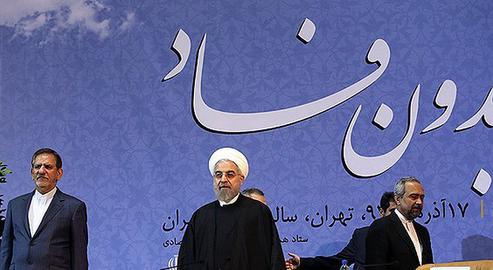

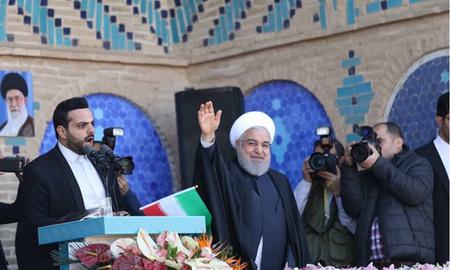
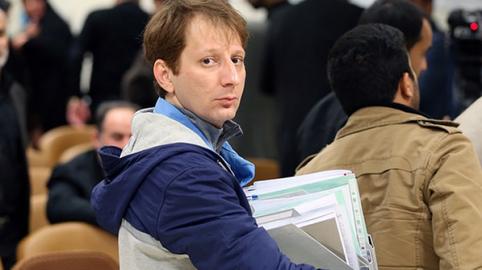
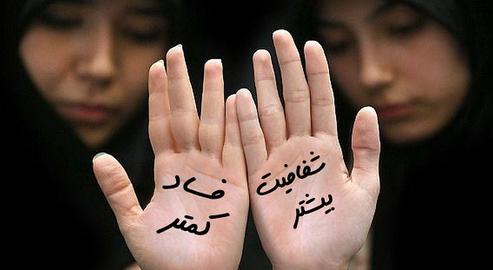



















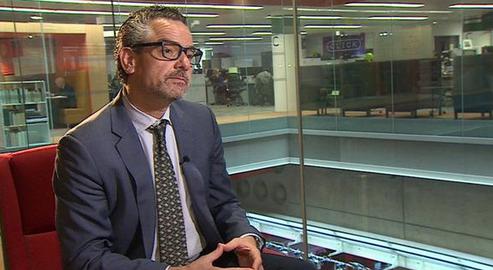
comments